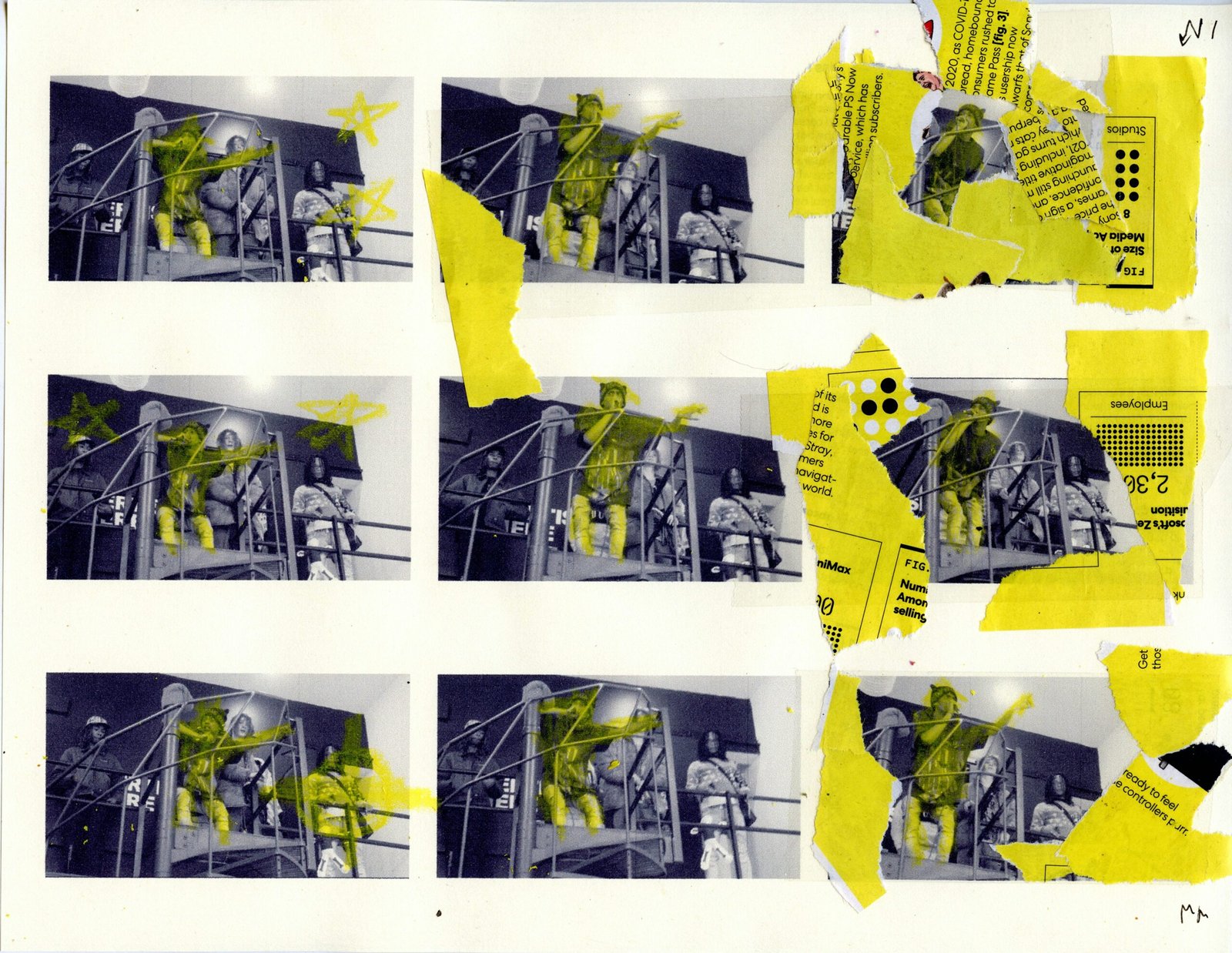
Cel animation has been used for decades and has a rich history in the world of animation. It was first introduced in the early 1900s and quickly became the go-to method for creating animated films. The process of cel animation involves a team of animators meticulously drawing each frame by hand, using specialized tools such as pencils, brushes, and inking pens.
Each frame is drawn on a separate cel, which is a transparent sheet made of cellulose acetate. The cels are then painted on the reverse side with vibrant colors that bring the characters and backgrounds to life. Once the drawings and colors are complete, the cels are carefully layered on top of each other, creating a stack of transparent sheets that form the final image.
Photography plays a crucial role in cel animation. The layered cels are placed on an animation stand, which is essentially a light table. A camera is positioned above the stand, and each frame is photographed individually. The camera captures the image by shining light through the transparent cels and onto a piece of film. This process is repeated for every frame, resulting in a sequence of images that, when played back at a high speed, create the illusion of movement.
One of the advantages of cel animation is the ability to create smooth and fluid movement. By drawing each frame individually, animators have full control over the motion and can create intricate and detailed movements. This level of control allows for precise timing and the ability to convey emotions and actions with great clarity.
However, cel animation is a time-consuming process that requires a team of skilled animators and artists. Each frame must be drawn, painted, and photographed, making it a labor-intensive technique. Additionally, the use of cels can result in a limited color palette and a flat, two-dimensional look.
Despite these challenges, cel animation has remained a popular and widely used technique in the world of animation. Its hand-drawn aesthetic and timeless appeal continue to captivate audiences of all ages. With advancements in technology, cel animation has evolved and adapted, incorporating digital tools and techniques to enhance the process. But at its core, cel animation remains a testament to the artistry and dedication of the animators who bring characters and stories to life, one frame at a time.
History of Cel Animation
The origins of cel animation can be traced back to the early 1900s when animators began experimenting with different techniques to bring drawings to life. One of the earliest pioneers of cel animation was Winsor McCay, who created the first animated film, “Gertie the Dinosaur,” in 1914.
McCay’s groundbreaking work paved the way for the development of cel animation as we know it today. The technique involves drawing individual frames on transparent sheets of celluloid, or cels, which are then layered on top of each other to create the illusion of movement. This process allowed animators to achieve smooth and fluid motion, giving life to their characters and stories.
Throughout the years, cel animation became the standard technique used in the animation industry. It was used extensively in classic Disney films such as “Snow White and the Seven Dwarfs” and “The Lion King,” captivating audiences with its vibrant and expressive visuals. The painstaking effort required to create each frame by hand was a testament to the dedication and skill of the animators.
However, with the advent of computer animation in the 1990s, cel animation started to decline in popularity. The introduction of software like Pixar’s RenderMan and DreamWorks’ PDI/DreamWorks allowed animators to create stunning visuals and realistic characters using digital tools. These advancements in technology offered a new level of flexibility and efficiency in the animation process, making it easier to experiment with different styles and techniques.
Despite the rise of computer animation, cel animation still holds a special place in the hearts of many animation enthusiasts. Its timeless charm and unique aesthetic continue to inspire contemporary animators, who often incorporate elements of cel animation in their work. From independent short films to major motion pictures, cel animation remains an integral part of the animation industry, reminding us of its rich history and enduring legacy.
6. Animation Cleanup
After the photography process, the frames are reviewed to ensure that the animation flows smoothly. Any inconsistencies or errors are corrected in this stage, which is known as animation cleanup. This involves refining the lines, adjusting the colors, and fixing any imperfections.
7. Sound Design
While the animation is being cleaned up, the sound design team works on creating the audio for the animation. This includes recording dialogue, sound effects, and music. The sound is synchronized with the animation to enhance the overall viewing experience.
8. Post-Production
Once the animation cleanup and sound design are complete, the final touches are added during the post-production phase. This may include adding visual effects, adjusting the color grading, and editing the final sequence of frames.
9. Distribution and Exhibition
Once the animation is fully completed, it is ready for distribution and exhibition. This involves marketing the animation to potential distributors and securing a release strategy. The animation may be screened in theaters, released on home video, or distributed through online platforms.
10. Audience Reception
The final step in the process is the audience reception. The success of the animation is ultimately determined by how well it is received by the target audience. Positive reviews, awards, and box office success are all indicators of a well-executed and impactful animation.
The process of cel animation is a meticulous and time-consuming one, requiring a team of skilled artists and technicians. However, the end result is a visually stunning and captivating animation that brings stories and characters to life.
4. Timeless Appeal
Another advantage of cel animation is its timeless appeal. Despite the advancements in technology, the charm and nostalgia associated with hand-drawn animation continue to captivate audiences of all ages. The classic look and feel of cel animation have a lasting impact that transcends trends and fads.
5. Enhanced Emotional Connection
Cel animation has a unique ability to evoke emotions in viewers. The hand-crafted aesthetic and attention to detail create a sense of authenticity and depth in the characters and their movements. This authenticity allows viewers to form a stronger emotional connection with the animated world, leading to a more immersive and memorable experience.
6. Artistic Expression
For animators, cel animation offers a platform for artistic expression. The process of hand-drawing each frame allows animators to infuse their personal style and creativity into every scene. This artistic freedom allows for the creation of visually stunning and thought-provoking animations that push the boundaries of storytelling.
7. Versatility
Cel animation is a versatile technique that can be used in various forms of media. From feature films and television shows to commercials and music videos, cel animation has the ability to adapt to different storytelling formats and genres. Its flexibility allows for the exploration of different artistic styles and techniques, making it a valuable tool for animators.
8. Skill Development
Mastering the art of cel animation requires a high level of skill and craftsmanship. Animators must have a deep understanding of movement, perspective, and timing to bring characters to life on the screen. The process of creating each frame by hand also hones an animator’s attention to detail and patience, leading to the development of valuable skills that can be applied to other areas of art and design.
9. Legacy and Influence
Cel animation has a rich history and has played a significant role in shaping the animation industry. Many iconic animated films and characters were brought to life through cel animation, leaving a lasting legacy. The techniques and principles developed in cel animation continue to influence modern animation, making it an essential part of the medium’s evolution.
In conclusion, cel animation may be considered a traditional technique, but it offers numerous advantages that contribute to its enduring popularity. The hand-drawn aesthetic, flexibility, and tangible artifacts produced through cel animation create a unique and timeless appeal. It allows for enhanced emotional connection, artistic expression, and skill development for animators. Furthermore, cel animation’s versatility and influence on the animation industry solidify its place as a valuable and cherished art form.



